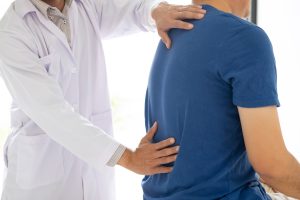Lower Back Pain Doctor Dallas
Expert Lower Back Pain Solutions in Dallas, Allen, McKinney, Frisco Tx
Lower Back Pain Specialist in Dallas
Lower back pain is when you have discomfort in the lower part of your back, and it’s different from pain in the upper back. The pain in the lower back can happen from things like pulling a muscle, problems with spinal discs, or just from bad posture. It often feels like a dull or sharp pain, especially when you bend or lift something heavy. On the other hand, pain in the upper back, which is near your shoulders and neck, usually comes from not sitting right, using your muscles too much, or having a curved spine. This pain is more spread out and you might feel stiff in your shoulders and neck too. Knowing where the pain is helps your lower pain doctor figure out the best way to treat it. For lower back pain, exercises that make your belly and back muscles stronger can help, while fixing how you sit and strengthening your upper body is better for upper back pain.
When Should I see a lower back pain specialist?
It’s important to see a specialist for lower back pain in certain situations:
1. Persistent Pain: If your pain doesn’t improve with rest and over-the-counter treatments after a few weeks.
2. Severe Pain: If the pain is severe and doesn’t get better with rest.
3. Radiating Pain: If the pain extends down your legs, especially below the knee. This can be a sign of sciatica or nerve damage.
4. Weakness, Numbness, or Tingling: In your legs or feet, as this could indicate nerve compression.
5. Unexplained Weight Loss: If you are losing weight without trying, it could be a sign of a more serious underlying condition.
6. Fever: If your back pain is accompanied by a high fever.
7. Trauma: If your back pain started after a fall, an accident, or other injury.
8. Bowel or Bladder Problems: If you experience changes in bladder or bowel control.
9. History of Cancer: If you have a history of cancer and develop new back pain.
10. Night Pain: If you experience pain that is worse at night or when you are lying down.
11. Age Factor: If you are over 50 and experiencing new or increased back pain.
12. Other Health Issues: Such as osteoporosis or a weakened immune system.
In these situations, it’s advisable to consult a healthcare professional promptly for a proper diagnosis and treatment plan. Early intervention can be crucial in managing the condition effectively.
What Causes lower back pain?
Lower back pain often results from musculoskeletal injuries, especially in athletes and young to middle-aged adults. As you age, lower back pain is more likely due to degenerative changes from daily stress on your back, such as:
- Herniated Disc: When a disc in your spine slips out of place and presses on your nerves. Learn more about herniated discs
- Osteoarthritis: The wearing down of protective cartilage on your joints. Check out more on PRP for osteoarthritis.
- Bone Spurs: Bony projections that develop along the edges of bones, often at the joints. Here’s the scoop on bone spurs
- Spinal Stenosis: The narrowing of spaces within your spine, putting pressure on the nerves. Get the details on spinal stenosis
- Degenerative Disc Disease: The breakdown of discs that cushion your vertebrae over time. Find out more about degenerative disc disease
These conditions can compress spinal nerves, causing inflammation and pain.
How Can I Relieve Lower Back Pain Fast?
Physical therapy is an effective treatment for quickly relieving lower back pain. Through personalized exercise programs, physical therapy strengthens the muscles supporting your lower back, improves flexibility, and reduces pain. Techniques such as manual therapy, stretching, and posture training help alleviate tension, enhance mobility, and prevent future pain.
In addition to exercises, physical therapists educate patients on proper body mechanics and self-management strategies, empowering them to manage their condition at home and prevent recurrences. This comprehensive approach not only provides immediate relief but also promotes long-term back health.
Platelet-Rich Plasma (PRP) Treatment
Platelet-Rich Plasma (PRP) therapy, offered by Dr. Ghalambour at Nortex Spine and Joint in Allen, Texas, is a minimally invasive treatment that helps relieve lower back pain by promoting tissue repair and reducing inflammation. PRP is derived from your own blood and contains a high concentration of growth factors that stimulate cell growth and accelerate the healing process. When injected into the affected area, PRP helps regenerate damaged tissues, reduce inflammation, and enhance blood flow, leading to faster recovery and sustained pain relief.
PRP therapy is particularly effective for conditions like degenerative disc disease, herniated discs, and spinal stenosis. It offers a quick recovery time with minimal risk of complications, providing long-term benefits by addressing the root causes of lower back pain. For more information or to see if PRP therapy is right for you, learn more about Nortex Spine and Joint or schedule a consultation with Dr. Ghalambour. With convenient new locations in Fort Worth, Coppell, and Garland, we’re here to help when you need reliable care.
💥 Relief is Here! Introducing Shockwave Therapy at NorTex Spine & Joint Institute 💥
Dr. Ghalambor breaks down how our state-of-the-art Storz Medical and SoftWave Shockwave Therapy machines are transforming pain management. This non-invasive treatment is designed to:
✅ Relieve chronic pain
✅ Accelerate healing
✅ Get you back to doing what you love—without surgery or medications!
Whether you’re dealing with tendonitis, joint pain, or sports injuries, shockwave therapy could be your path to recovery.
📞 Call us at 972-872-8408
🌐 Learn more: nortexspineandjoint.com
#PainRelief #ShockwaveTherapy #NorTexSpineAndJoint #AllenTexas #ChronicPainTreatment #SportsInjuryRecovery #HealingAccelerated

💥 Relief is Here! Introducing Shockwave Therapy at NorTex Spine & Joint Institute 💥
Dr. Ghalambor breaks down how our state-of-the-art Storz Medical and SoftWave Shockwave Therapy machines are transforming pain management. This non-invasive treatment is designed to:
✅ Relieve chronic pain
✅ Accelerate healing
✅ Get you back to doing what you love—without surgery or medications!
Whether you’re dealing with tendonitis, joint pain, or sports injuries, shockwave therapy could be your path to recovery.
📞 Call us at 972-872-8408
🌐 Learn more: nortexspineandjoint.com
#PainRelief #ShockwaveTherapy #NorTexSpineAndJoint #AllenTexas #ChronicPainTreatment #SportsInjuryRecovery #HealingAccelerated
...
💡 Could PRP Therapy Be the Solution for Your Joint Pain?
Struggling with persistent joint pain, limited mobility, or wear-and-tear from aging or activity? 🤔 Platelet-Rich Plasma (PRP) therapy might be the answer! Here’s why patients love PRP:
✨ Why Choose PRP?
• Non-invasive with minimal downtime
• Uses your body’s natural growth factors to heal
• Provides long-term relief
Don’t let joint pain hold you back from the life you love. ❤️ Take the first step toward relief today!
📞 Call us at (972) 872-8408
🌐 Visit us at nortexspineandjoint.com
#PRPTherapy #JointPainRelief #PainManagement #NaturalHealing #RegenerativeMedicine #PlateletRichPlasma #InjuryRecovery #ArthritisRelief #JointHealth #BackPainRelief #NonInvasiveTreatment #HealingNaturally #AllenTX #WellnessJourney #ChronicPainSolutions #PainReliefWithoutMeds

💡 Could PRP Therapy Be the Solution for Your Joint Pain?
Struggling with persistent joint pain, limited mobility, or wear-and-tear from aging or activity? 🤔 Platelet-Rich Plasma (PRP) therapy might be the answer! Here’s why patients love PRP:
✨ Why Choose PRP?
• Non-invasive with minimal downtime
• Uses your body’s natural growth factors to heal
• Provides long-term relief
Don’t let joint pain hold you back from the life you love. ❤️ Take the first step toward relief today!
📞 Call us at (972) 872-8408
🌐 Visit us at nortexspineandjoint.com
#PRPTherapy #JointPainRelief #PainManagement #NaturalHealing #RegenerativeMedicine #PlateletRichPlasma #InjuryRecovery #ArthritisRelief #JointHealth #BackPainRelief #NonInvasiveTreatment #HealingNaturally #AllenTX #WellnessJourney #ChronicPainSolutions #PainReliefWithoutMeds
...
🌟 Arthritis is more than just joint pain – it’s a condition that can severely impact your quality of life, making even the simplest tasks feel impossible. Whether it’s your knees, hips, shoulders, or hands, arthritis can affect any joint and cause persistent discomfort, stiffness, and swelling.
🤕 Living with chronic pain doesn’t have to be your only option. At Nortex Spine and Joint Institute, we specialize in treatments designed to provide relief and improve mobility, so you can reclaim your daily life.
💪 Don’t let arthritis hold you back. Take the first step towards feeling better today!
Call 📞 972-872-8408
or visit 💻 nortexspineandjoint.com
to learn how we can help.
#ArthritisAwareness #JointPainRelief #PainManagement #ArthritisCare #HealthyLiving #NortexSpineAndJoint #AllenTexas

🌟 Arthritis is more than just joint pain – it’s a condition that can severely impact your quality of life, making even the simplest tasks feel impossible. Whether it’s your knees, hips, shoulders, or hands, arthritis can affect any joint and cause persistent discomfort, stiffness, and swelling.
🤕 Living with chronic pain doesn’t have to be your only option. At Nortex Spine and Joint Institute, we specialize in treatments designed to provide relief and improve mobility, so you can reclaim your daily life.
💪 Don’t let arthritis hold you back. Take the first step towards feeling better today!
Call 📞 972-872-8408
or visit 💻 nortexspineandjoint.com
to learn how we can help.
#ArthritisAwareness #JointPainRelief #PainManagement #ArthritisCare #HealthyLiving #NortexSpineAndJoint #AllenTexas
...
After coming to us for back pain relief, this patient found even more than he expected! Not only did we help his back, but he discovered that we could also treat his knee pain with PRP injections. Now, thanks to the treatment, he’s enjoying life pain-free and able to get back to the activities he loves.
At Nortex Spine and Joint Institute, we believe in finding the right solution for every patient, whether it’s back, knee, or joint pain. If you’re ready to move better and feel better, we’re here for you!
📞 214-613-1871
💻 www.nortexspineandjoint.com
#PRPTherapy #PainReliefJourney #KneePain #BackPain #JointHealth #AllenTX #PainFreeLiving #HealthAndWellness #GetBackToLiving

After coming to us for back pain relief, this patient found even more than he expected! Not only did we help his back, but he discovered that we could also treat his knee pain with PRP injections. Now, thanks to the treatment, he’s enjoying life pain-free and able to get back to the activities he loves.
At Nortex Spine and Joint Institute, we believe in finding the right solution for every patient, whether it’s back, knee, or joint pain. If you’re ready to move better and feel better, we’re here for you!
📞 214-613-1871
💻 www.nortexspineandjoint.com
#PRPTherapy #PainReliefJourney #KneePain #BackPain #JointHealth #AllenTX #PainFreeLiving #HealthAndWellness #GetBackToLiving
...
🌟 Discover the Power of Regenerative Medicine with ST*M CELL THERAPY at Nortex Spine and Joint Institute! 🌟
Imagine healing without surgery or pain medications. St*m Cell Therapy can help regenerate damaged tissues, relieve pain, and get you back to doing the things you love! Whether it`s joint pain, arthritis, or injury recovery, this revolutionary treatment might just be the breakthrough you’ve been waiting for.
👉 Covered by PPO Insurance – Don’t miss out on this life-changing opportunity!
💬 Call Now: (972) 872-8408
📧 Email: [email protected]
🌐 Visit: nortexspineandjoint.com
Take the first step toward a pain-free life today!

🌟 Discover the Power of Regenerative Medicine with ST*M CELL THERAPY at Nortex Spine and Joint Institute! 🌟
Imagine healing without surgery or pain medications. St*m Cell Therapy can help regenerate damaged tissues, relieve pain, and get you back to doing the things you love! Whether it`s joint pain, arthritis, or injury recovery, this revolutionary treatment might just be the breakthrough you’ve been waiting for.
👉 Covered by PPO Insurance – Don’t miss out on this life-changing opportunity!
💬 Call Now: (972) 872-8408
📧 Email: [email protected]
🌐 Visit: nortexspineandjoint.com
Take the first step toward a pain-free life today!
...
🔍💡 Struggling with back pain? If nothing`s working, it`s time for the right diagnosis! Learn about the multiple structures causing your pain and why correct diagnosis is key to effective treatment.
🩺💬 Call us at Nortex Spine and Joint Institute or visit our website to learn more!
#painrelief #PainReliefOptions #BackPain #painfreeliving #sciaticarelief
#sciaticapain #chiropractic #PRP #prptreatment #regenerativemedicine

🔍💡 Struggling with back pain? If nothing`s working, it`s time for the right diagnosis! Learn about the multiple structures causing your pain and why correct diagnosis is key to effective treatment.
🩺💬 Call us at Nortex Spine and Joint Institute or visit our website to learn more!
#painrelief #PainReliefOptions #BackPain #painfreeliving #sciaticarelief
#sciaticapain #chiropractic #PRP #prptreatment #regenerativemedicine
...
🔍💢 Struggling with back pain? Let`s uncover the real culprit! Learn about discs and facet joints and how our non-surgical treatments at Nortex Spine and Joint Institute can bring relief! ✨
#BackPain #JointHealth #herniateddisc #sciaticarelief
#NorticInstitute #regenerativemedicine #painrelief

🔍💢 Struggling with back pain? Let`s uncover the real culprit! Learn about discs and facet joints and how our non-surgical treatments at Nortex Spine and Joint Institute can bring relief! ✨
#BackPain #JointHealth #herniateddisc #sciaticarelief
#NorticInstitute #regenerativemedicine #painrelief
...
Don`t let spine or joint issues hold you back from living your best life. With our proven treatments, you can reclaim your mobility and say goodbye to discomfort. Reach out to us now! 💫
#PainManagement #spinehealth #spineandjoint #backpainrelief
#prp #prptreatment #PRPtherapy #regenerativemedicine #NeckPain
#kneepain #shoulderpain #allentx #dfw #nortexspineandoint

Don`t let spine or joint issues hold you back from living your best life. With our proven treatments, you can reclaim your mobility and say goodbye to discomfort. Reach out to us now! 💫
#PainManagement #spinehealth #spineandjoint #backpainrelief
#prp #prptreatment #PRPtherapy #regenerativemedicine #NeckPain
#kneepain #shoulderpain #allentx #dfw #nortexspineandoint
...

The Doctor’s Guide to Lower Back Pain Causes and Cures
Lower back pain is one of the most common reasons people seek medical attention. Whether it’s a dull ache or a sharp pain, this condition

Is Your Daily Routine Causing Your Lower Back Pain?
Lower back pain can be frustrating and debilitating, often interfering with your daily life. Surprisingly, everyday habits might be the root cause of your discomfort.

Is Your Mattress to Blame for Your Lower Back Pain?
Waking up with lower back pain can ruin your day before it even begins. But have you ever wondered if your mattress could be the


